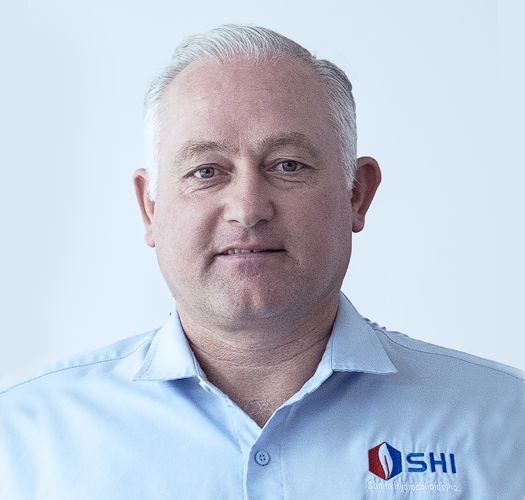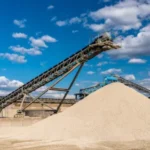What Is a Defoamer and Why Is It Essential in Oilfield Cementing?

Cementing is critical to well integrity and long term performance in oilfield operations. But foam formation during slurry mixing can quietly disrupt density, flow and placement accuracy. This is where defoamers are critical. These chemical agents are essential for eliminating foam, controlling entrained air and stabilizing cement slurries.
Foam can cause serious problems that affect well integrity and operational efficiency. This blog covers what defoamers are, how they work, their operational role and current market trends for engineers and procurement professionals making field ready decisions.
What Is a Defoamer?
A defoamer is a chemical additive used to eliminate or suppress foam in liquid systems. In oilfield cementing, it helps maintain consistent slurry density, reduces trapped air and improves pumpability during placement. Foam disrupts flow and can skew downhole measurements making defoamers essential for precision.
Defoaming agent, antifoaming agent and defoamer chemical (broad category) are all the same. Strictly speaking, defoamers eliminate existing foam while anti foam agent and antifoaming agents are used to prevent foam from forming in the first place.
The terms anti-foam agent, anti foam agent and antifoaming agents are often used interchangeably with defoamer but defoamers specifically target and break down existing foam whereas antifoaming agents act to stop foam before it appears.
Cutting foam early ensures better zonal isolation, stronger cement bonds and fewer remedial jobs across the well’s lifecycle.
Why Foam Is a Problem in Cementing?
Foam in oilfield cementing slurries forms due to high shear mixing, surfactant interactions and gas entrainment during preparation. Once present, foam disrupts key parameters:
- Inaccurate density leads to poor zonal isolation
- Reduced pump efficiency can stall cementing jobs
- Entrapped air increases porosity and weakens set cement
- Delays occur when slurry must be remixed or conditioned
Foam can also cause other issues such as equipment malfunctions or surface defects in cementing operations. These risks compromise well integrity and increase operational costs. Defoamers solve this by destabilizing bubbles and promoting gas release, restoring slurry consistency and placement control.
Types of Defoamers Used in Oilfield Applications
Choosing the right defoamer for cementing operations depends on slurry composition, well conditions and environmental regulations. While this article focuses on oilfield use, defoamers are also widely used in many applications and industries beyond oilfield cementing. Here’s how the main types stack up in oilfield use.
1. Silicone Based Defoamers
These are the go to choice for most cementing jobs and are formulated with silicones as the main ingredient. They’re built from polydimethylsiloxane and perform reliably in high-temperature, high-pressure wells. They are effective at low dosage, are thermally stable and stay active even in aggressive downhole environments. Their low surface tension helps collapse foam fast keeping slurry density consistent.
2. Oil Based Defoamers
Oil-based defoamers can be mineral oil based or use other oils such as silicone oils or vegetable oils as carriers. Mineral oil based defoamers are common due to their cost-effectiveness and reliable performance in various industrial applications. These defoamers excel in high shear mixing setups and are often used in batch mixing tanks or continuous blending systems. While they’re powerful against surface foam, they may require careful handling due to flammability and compatibility with other additives.
3. Water-Based Defoamers
These are often formulated as silicone-free defoamers to meet environmental and regulatory requirements. They’re preferred in regions with strict environmental rules, easier to permit, safer to transport and simpler to clean up. Though they may not match the raw power of silicone types, they’re effective in low foaming systems and help meet ESG targets.
4. EO/PO-Based Defoamers
Made from ethylene oxide and propylene oxide copolymers, these offer dual action preventing foam and knocking down existing bubbles. They’re versatile across fluid systems and often used in combination with other surfactants.
Sunita Hydrocolloids offers engineered defoamer solutions designed for harsh cementing conditions and fast dispersion.
How Defoamers Work
Defoamers break foam down fast using a three-step mechanism:
- They spread over foam films: Defoamer droplets migrate to the air-liquid interface and destabilize the surface layer that holds bubbles together. These droplets spread rapidly across the bubble wall, also known as the foam lamella, to disrupt the foam structure.
- Bubble rupture: They lower surface tension causing weak spots in the foam structure. The breaking of the foam occurs as the foam lamella is weakened and broken, leading to the collapse of bubbles.
- Gas release: Once ruptured, trapped air and gas escape. Foam volume drops, slurry density stabilizes. As the concentration of surface-active ingredients decreases over time, foam stability is reduced, making it easier for defoamers to eliminate further foam formation.
Lab and field trials show that advanced cement defoamers can cut entrapped air by around 50 percent compared to standard blends. That means tighter density control, stronger cement bonds and fewer risks like cavitation or gas migration during placement.
For high-performance slurry conditioning, Sunita Hydrocolloids offers engineered defoamers built for harsh oilfield conditions—see our cementing additives for details.
Application of Defoamers in Cementing
Defoamers are integrated into the cementing process to control foam from start to finish, ensuring effective foam management throughout mixing, pumping, and placement. Their role is critical across all stages.
Operational Stages
- Mixing: Defoamers are introduced during slurry prep to prevent foam from forming under high shear.
- Pumping: They keep lines and tanks clear of foam avoiding stalls or density shifts.
- Placement: Foam free slurry flows evenly reducing air entrapment and porosity in the set cement.
Defoamers provide benefits such as better placement accuracy, higher compressive strength, shorter wait on cement times and fewer delays and job interruptions.
Compatibility
Most defoamers work well with dispersants, retarders and fluid loss additives. Still, lab testing is essential to confirm compatibility with the full additive package. This ensures no interference with set time, rheology or bonding. Sunita Hydrocolloids offers defoamers engineered for fast dispersion and tough well conditions.
When to Use Defoaming Agents
The use of defoamers depends on slurry design, mixing conditions and well environment.
Recommended Conditions
Use defoamers when mixing involves high agitation or when surfactants and polymers are present in large amounts. Offshore jobs and foam prone zones also benefit from early foam control. Accurate density is critical in these cases and defoamers help maintain it.
Situations Requiring Caution
Slurries with low fluid loss additives may behave unpredictably with defoamers. Foam dynamics can shift affecting placement. In very high temperature wells, only heat stable defoamers should be considered. Always review the cement fluid profile and job specifications before selecting a defoamer.
Defoamers Market Trends
The global defoamer market is expanding steadily, driven by demand for efficient additives in oilfield operations and many industrial processes. Defoamers are part of a larger family of foam control products used across multiple industries to address specific foaming problems. Low VOC formulations and green chemistry are shaping product development across regions.
Market Snapshot
| Region | Value (2023) | Forecast (2030) | CAGR (2024–2030) |
| Global | $3,587.3 million | $5,047.7 million | 5.00% |
| North America | $864.3 million | $1,181.2 million | 4.60% |
| United States | $603.8 million | $832.7 million | 4.70% |
Sources: Grand View Research
Driving Factors
The defoamer market is being shaped by a few key forces. In the United States, the surge in unconventional drilling, especially in shale formations, is pushing demand for high efficiency additives that can handle complex cementing conditions. Operators are looking for chemicals that reduce downtime and improve pumpability and defoamers play a critical role in that mix.
At the same time, there’s growing pressure to meet environmental standards which is driving the shift toward low VOC and biodegradable formulations.
Regional Insights
North America leads global defoamer consumption, largely due to its active shale plays and high volume cementing operations. In the Middle East and Africa, offshore drilling is gaining momentum creating fresh demand for foam control agents that perform under high pressure, high temperature conditions.
Meanwhile, Asia Pacific is seeing rapid industrial growth, especially in China and India. Each region is pushing for performance, compliance and cost efficiency making defoamers a critical part of the oilfield chemical mix. Sunita Hydrocolloids continues to align its defoamer portfolio with these trends, supporting US oilfield chemical solutions with high-performance, compliant formulation
Choosing the Right Defoamer for Oilfield Applications
Picking the right defoamer is about matching chemistry to field conditions. Here’s what to look for:
A. Cement System Composition
High-solids blends tend to foam more. The thicker the mix, the greater the need for aggressive defoaming agents that can handle dense slurry behavior.
B. Temperature/Pressure Conditions
Silicone based defoamers are often preferred in high temperature wells. Their thermal stability and low surface tension make them reliable under extreme downhole conditions.
C. Environmental Compliance
In regions with strict discharge rules, water based and biodegradable defoamers are the go to. These meet compliance without sacrificing performance.
D. Mixing and Pumping
High shear mixing systems demand fast acting defoamers. Quick foam knockdown ensures smoother pumping and better placement.
E. Additive Compatibility
Always lab test defoamers with your full cement blend. Compatibility with other additives like dispersants and fluid loss agents is key to avoiding unexpected reactions.
Conclusion
Defoamers are essential for clean cement placements, strong zonal isolation and protecting pumps from foam induced wear. Every well has its own chemistry, pressure profile and compliance rules so defoamer selection should be tailored to your specifications. To match your cementing conditions, explore Sunita Hydrocolloids defoamers.





